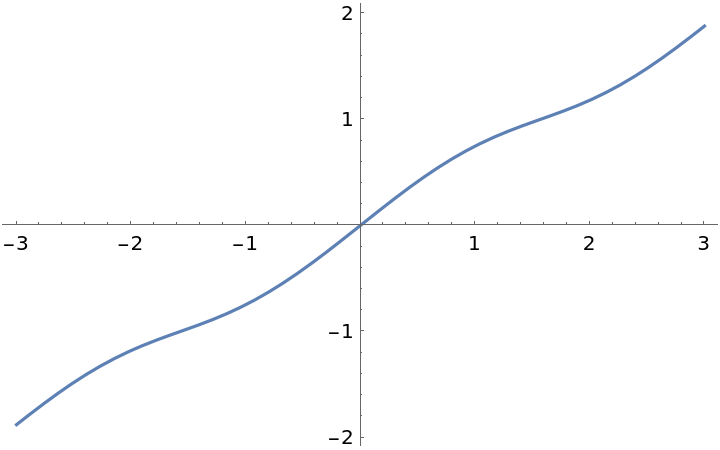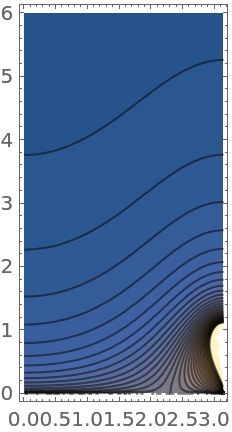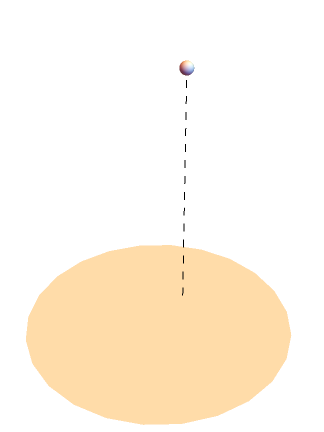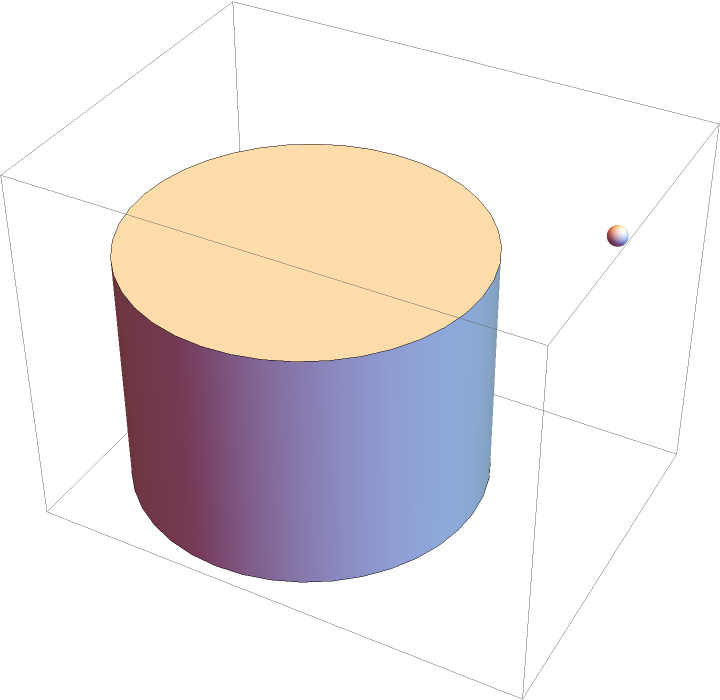Wolfram Function Repository
Instant-use add-on functions for the Wolfram Language
Function Repository Resource:
Evaluate the Heuman lambda function
ResourceFunction["HeumanLambda"][ϕ,m] gives the Heuman lambda function |
Evaluate numerically:
| In[1]:= |
|
| Out[1]= |
|
Plot over a subset of the reals:
| In[2]:= |
|
| Out[2]= |

|
Series expansion about the origin:
| In[3]:= |
|
| Out[3]= |
|
Evaluate for complex arguments and parameters:
| In[4]:= |
|
| Out[4]= |
|
Evaluate to high precision:
| In[5]:= |
|
| Out[5]= |
|
The precision of the output tracks the precision of the input:
| In[6]:= |
|
| Out[6]= |
|
Simple exact values are generated automatically:
| In[7]:= |
|
| Out[7]= |
|
| In[8]:= |
|
| Out[8]= |
|
HeumanLambda threads elementwise over lists:
| In[9]:= |
|
| Out[9]= |
|
Parity transformation and quasiperiodicity relations are automatically applied:
| In[10]:= |
|
| Out[10]= |
|
| In[11]:= |
|
| Out[11]= |
|
Apsidal angle of a gyroscopic pendulum, plotted as a function of the initial angle θ and the coefficient of stability μ:
| In[12]:= |
![ContourPlot[\[Pi]/
2 ResourceFunction[
"HeumanLambda"][\[Pi]/2 - ArcCos[Sqrt[1 + \[Mu]^2 + 2 \[Mu] Cos[\[Theta]]] - \[Mu]], 1/2 - (\[Mu] + Cos[\[Theta]])/(
2 Sqrt[1 + \[Mu]^2 + 2 \[Mu] Cos[\[Theta]]])] - Sqrt[\[Mu]/Sqrt[1 + \[Mu]^2 + 2 \[Mu] Cos[\[Theta]]]]
Cos[\[Theta]] EllipticK[
1/2 - (\[Mu] + Cos[\[Theta]])/(
2 Sqrt[1 + \[Mu]^2 + 2 \[Mu] Cos[\[Theta]]])], {\[Theta], 0, \[Pi]}, {\[Mu], 0, 6}, AspectRatio -> Automatic, Contours -> Range[5, 180, 5] \[Degree], PlotRange -> {0, 2 \[Pi]}]](https://www.wolframcloud.com/obj/resourcesystem/images/229/2293c977-684b-40fd-8d1a-a258aa64325b/2c7222f28fad7a76.png)
|
| Out[12]= |

|
Visualize the solid angle subtended by a circular disk:
| In[13]:= |
![With[{L = 2, r0 = 2/5, rm = 1},
Graphics3D[{EdgeForm[], Polygon[PadRight[N@CirclePoints[rm, 24], {Automatic, 3}]], {Dashed,
Line[{{r0, 0, 0}, {r0, 0, L}}]}, Sphere[{r0, 0, L}, rm/20]}, Boxed -> False, ViewPoint -> {-2.4, -1.3, 2.}]]](https://www.wolframcloud.com/obj/resourcesystem/images/229/2293c977-684b-40fd-8d1a-a258aa64325b/0a1d879852ad83f1.png)
|
| Out[13]= |

|
Evaluate the solid angle:
| In[14]:= |
![With[{L = 2, r0 = 2/5, rm = 1}, N[2 \[Pi] Boole[r0 < rm] - (2 L)/Sqrt[L^2 + (rm + r0)^2]
EllipticK[(4 r0 rm)/(L^2 + (rm + r0)^2)] - \[Pi] Sign[
r0 - rm] ResourceFunction["HeumanLambda"][
ArcTan[Abs[r0 - rm]/L] - \[Pi]/2, (4 r0 rm)/(L^2 + (rm + r0)^2)],
20]]](https://www.wolframcloud.com/obj/resourcesystem/images/229/2293c977-684b-40fd-8d1a-a258aa64325b/752dc0fbb9927fc9.png)
|
| Out[14]= |
|
Compare with the result of NIntegrate:
| In[15]:= |
|
| Out[15]= |
|
Visualize the gravitational attraction of a point to a semi-infinite right circular cylinder:
| In[16]:= |
|
| Out[16]= |

|
Evaluate the vertical component of gravitational attraction, assuming the cylinder has the density of iron:
| In[17]:= |
![With[{x0 = Quantity[5/3, "Meters"], z0 = Quantity[4/7, "Meters"], r = Quantity[1, "Meters"], \[Rho] = Entity["Element", "Iron"][EntityProperty["Element", "Density"]]}, UnitConvert[
2 \[Rho] Quantity[
"GravitationalConstant"] N[(r^2 - x0^2)/Sqrt[(x0 + r)^2 + z0^2]
EllipticK[(4 r x0)/((x0 + r)^2 + z0^2)] + Sqrt[(x0 + r)^2 + z0^2]
EllipticE[(4 r x0)/((x0 + r)^2 + z0^2)] + \[Pi]/
2 z0 (ResourceFunction["HeumanLambda"][
ArcCos[(r - x0)/Sqrt[(x0 - r)^2 + z0^2]], (
4 r x0)/((x0 + r)^2 + z0^2)] - 2)], $UnitSystem]]](https://www.wolframcloud.com/obj/resourcesystem/images/229/2293c977-684b-40fd-8d1a-a258aa64325b/77f48b9bd21aa8f8.png)
|
| Out[17]= |
|
Compare with the result of NIntegrate:
| In[18]:= |
![With[{x0 = 5/3, z0 = 4/7, r = 1, \[Rho] = Entity["Element", "Iron"][EntityProperty["Element", "Density"]]}, UnitConvert[
2 \[Pi] \[Rho] Quantity[r, "Meters"] Quantity[
"GravitationalConstant"] NIntegrate[
BesselJ[0, x0 t] BesselJ[1, r t] E^(-z0 t)/t, {t, 0, \[Infinity]}], $UnitSystem]]](https://www.wolframcloud.com/obj/resourcesystem/images/229/2293c977-684b-40fd-8d1a-a258aa64325b/618b973fd8dc6af8.png)
|
| Out[18]= |
|
HeumanLambda can be expressed in terms of Legendre-Jacobi elliptic integrals:
| In[19]:= |
![With[{\[Phi] = 2, m = 2/3}, N[{ResourceFunction["HeumanLambda"][\[Phi], m], 2/\[Pi] (EllipticE[m] EllipticF[\[Phi], 1 - m] + EllipticK[
m] (EllipticE[\[Phi], 1 - m] - EllipticF[\[Phi], 1 - m]))}]]](https://www.wolframcloud.com/obj/resourcesystem/images/229/2293c977-684b-40fd-8d1a-a258aa64325b/78a46c7ffe4c78fd.png)
|
| Out[19]= |
|
| In[20]:= |
![With[{\[Phi] = 2, m = 2/3}, N[{ResourceFunction["HeumanLambda"][\[Phi], m], 2/\[Pi] EllipticK[m] JacobiZeta[\[Phi], 1 - m] + EllipticF[\[Phi], 1 - m]/EllipticK[1 - m]}]]](https://www.wolframcloud.com/obj/resourcesystem/images/229/2293c977-684b-40fd-8d1a-a258aa64325b/68a84d1d2b963bb1.png)
|
| Out[20]= |
|
Certain cases of EllipticPi can be expressed in terms of EllipticK and HeumanLambda:
| In[21]:= |
![With[{n = -11/5, m = 3/4},
N[{EllipticPi[n, m], ConditionalExpression[
EllipticK[m]/(
1 - n) + (n \[Pi])/(
2 Sqrt[n (1 - n) (n - m)]) (ResourceFunction["HeumanLambda"][
ArcSin[1/Sqrt[1 - n]], m] - 1), n < 0]}]]](https://www.wolframcloud.com/obj/resourcesystem/images/229/2293c977-684b-40fd-8d1a-a258aa64325b/6a2e10cdd0b97b5d.png)
|
| Out[21]= |
|
| In[22]:= |
![With[{n = 2/3, m = 1/4},
N[{EllipticPi[n, m], ConditionalExpression[(\[Pi] Sqrt[n])/(2 Sqrt[(1 - n) (n - m)])
ResourceFunction["HeumanLambda"][
ArcSin[Sqrt[(n - m)/(n (1 - m))]], m], m < n < 1]}]]](https://www.wolframcloud.com/obj/resourcesystem/images/229/2293c977-684b-40fd-8d1a-a258aa64325b/63192b6e9d19ab04.png)
|
| Out[22]= |
|
This work is licensed under a Creative Commons Attribution 4.0 International License